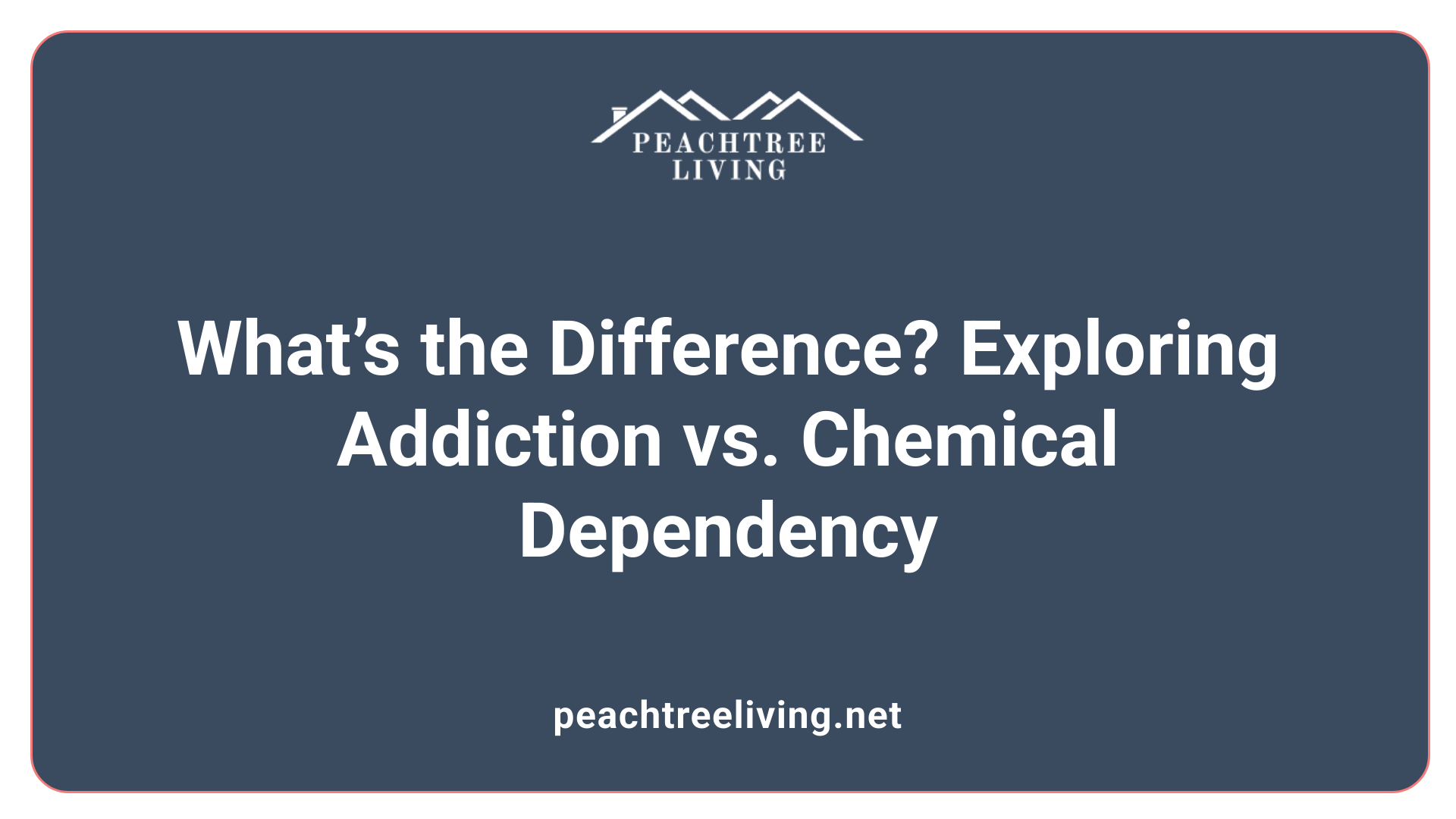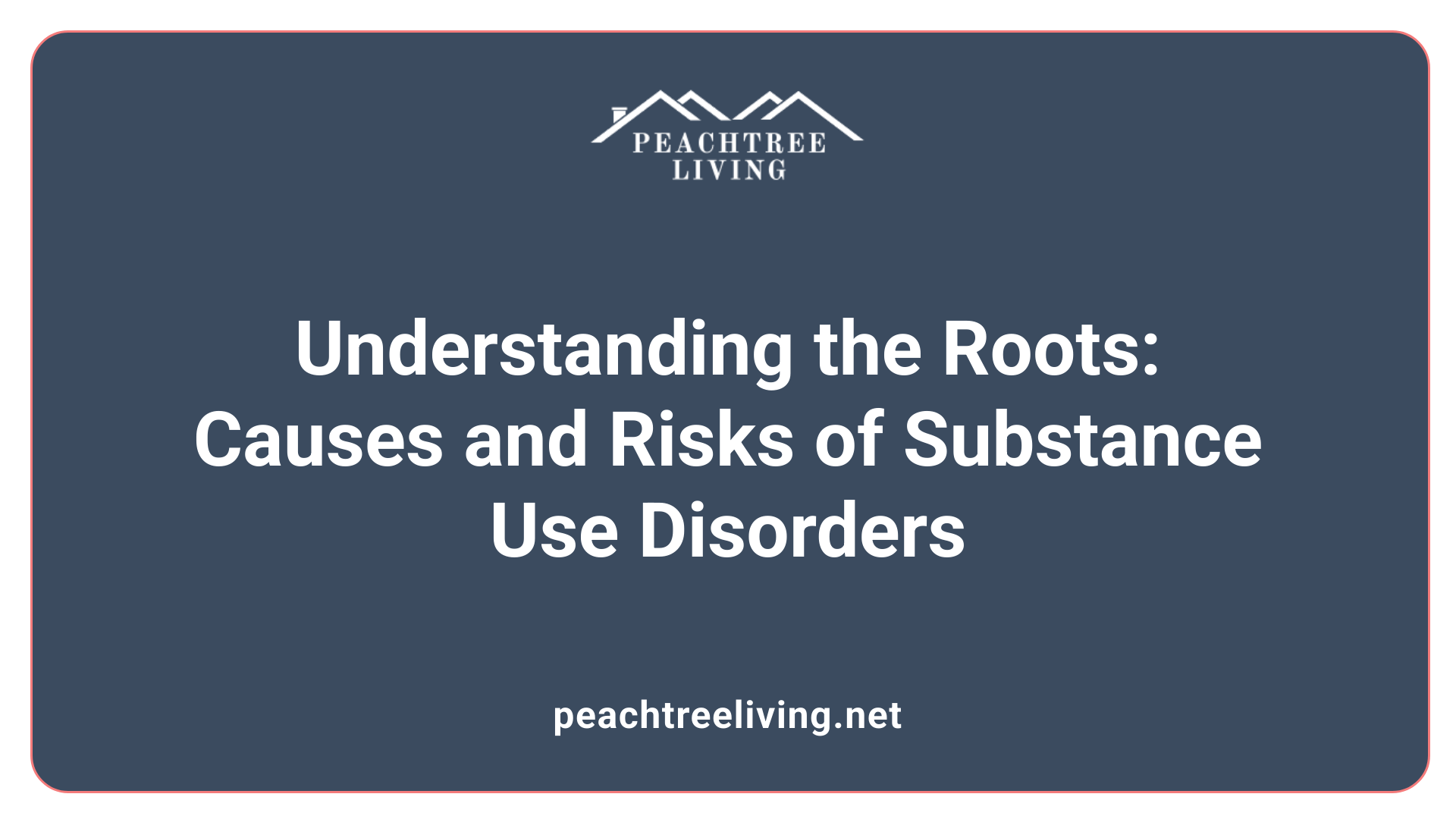Introduction to Substance Use and Chemical Dependency
Substance use and chemical dependency are interconnected yet distinct health issues that affect individuals across all ages and backgrounds. These conditions involve complex biological, psychological, and social factors that influence their development and treatment. Recognizing the differences between drug addiction, chemical dependence, and substance use disorders is crucial for effective intervention and recovery strategies. This article delves into the definitions, characteristics, causes, symptoms, diagnostic criteria, treatment options, and ongoing support systems essential for managing these challenges.
Defining Drug Addiction and Chemical Dependency

What are the characteristics and differences between drug addiction and chemical dependency?
Drug addiction, also known as substance use disorder, is a chronic and complex brain disease characterized by compulsive drug-seeking behaviors, intense cravings, and an inability to control use despite causing harm. It involves both psychological and physical elements, with changes occurring in brain circuits related to reward, motivation, and self-control. Individuals with addiction often experience distress, difficulty abstaining from substances, and may continue use even after experiencing negative consequences. Addiction can disrupt various aspects of life, including mental health, relationships, employment, and social stability.
Chemical dependency, in contrast, primarily refers to the body's physical reliance on a substance. It occurs when repeated exposure to a drug causes physiological adaptations, leading to tolerance (requiring more of the substance to achieve the same effect) and withdrawal symptoms upon cessation, such as nausea, tremors, or hallucinations. Importantly, dependency does not necessarily involve the compulsive behaviors or psychological cravings seen in addiction. For instance, patients on long-term medications like opioids for chronic pain can develop chemical dependence without engaging in addictive behaviors.
The key difference lies in the scope and behavioral aspect: addiction encompasses a pattern of harmful behaviors, psychological cravings, and compulsive use, while dependency mainly concerns physical adaptation and withdrawal. Notably, dependence can happen without addiction, such as in cases of prescribed medication where the person stabilizes after stopping the drug.
Overall, addiction affects multiple domains including mental health, behavior, and social functioning, and involves brain circuitry changes that reinforce drug-seeking activities. Dependency signifies the physical body’s adaptation without necessarily involving these behavioral compulsions. Recognizing this distinction helps in tailoring appropriate treatment strategies for individuals struggling with substance-related issues.
| Aspect | Addiction | Chemical Dependency | Main Focus | | -------- | -------- | ------------------- | ------------ | | Definition | Chronic brain disorder involving compulsive use and cravings | Physical reliance on a substance with withdrawal symptoms | Broader scope involving behavior and psychological factors | | Processes involved | Brain circuit changes, psychological craving, compulsive behaviors | Physiological adaptation, tolerance, withdrawal | Type of dependence | Psychological and physical | Mainly physical | | Can occur without one another | Rare, but possible | Yes, especially with prescribed medications | Affected areas | Brain, behavior, social life | Body’s physiological response | | Treatment considerations | Behavioral therapy, medication, support groups | Medical detox, tapering, managing withdrawal | Overall impact | Disrupts mental health, social life, and behavior | Body’s physical functioning | | Summary | A complex chronic disease involving behavior and brain changes | Mainly physical reliance with withdrawal symptoms |
Causes and Contributing Factors of Substance Use and Dependency
 Understanding what leads to substance use disorder and chemical dependency involves examining several intertwined factors. These include genetics, environment, social influences, personality, and psychological health.
Understanding what leads to substance use disorder and chemical dependency involves examining several intertwined factors. These include genetics, environment, social influences, personality, and psychological health.
Genetic predisposition plays a significant role in addiction. Individuals with a family history of substance use problems are more likely to develop similar issues. This genetic susceptibility may influence how the brain responds to substances and how easily dependence or addiction can develop.
Environmental stressors, such as trauma, abuse, or chronic stress, contribute heavily to the risk. These stressors can push individuals toward self-medicating with substances to cope with pain or anxiety. Growing up in high-pressure environments or communities with prevalent drug use also elevates risk.
Social influences and peer pressure are critical, especially during adolescence. Friends and social networks often normalize drug or alcohol use, which can initiate or reinforce substance-using behaviors. Peer acceptance can sometimes override personal reservations, leading to early experimentation.
Personality traits, including impulsivity, sensation-seeking, or poor self-regulation, increase vulnerability. These traits may lead individuals to seek out new experiences or ignore the risks associated with drug use.
Psychiatric comorbidities such as depression, anxiety, PTSD, or bipolar disorder frequently coexist with substance use disorders. Self-medication of these mental health issues can lead into a cycle of dependency, complicating both diagnosis and treatment.
What do chemical dependency and substance abuse refer to?
Chemical dependency and substance abuse refer to the compulsive and often uncontrolled use of mood-altering chemicals, such as alcohol, drugs, or prescription medications, which can lead to significant health problems. Chemical dependency is considered a chronic disease that involves a physiological and psychological need for these substances, often resulting in dependence, tolerance, and withdrawal symptoms. Substance abuse encompasses the harmful or hazardous use of substances that can impair daily functioning, relationships, and overall well-being. Both conditions are influenced by genetic, environmental, and social factors, and they often co-occur with other mental health disorders, requiring comprehensive treatment. Recovery involves lifelong efforts, including medical intervention, counseling, support systems, and lifestyle changes to manage cravings and prevent relapse.
How is addiction different from chemical dependency?
Addiction involves both physical and psychological dependence, driven by biochemical brain changes and compulsive behaviors, while chemical dependency mainly refers to physical reliance on a substance marked by withdrawal symptoms when stopping use. Addiction often includes intense cravings, behaviors despite harm, and a psychological urge to continue, sometimes without physical dependence. Conversely, chemical dependency primarily entails physical signs like tolerance and withdrawal, without necessarily incorporating the compulsive behaviors central to addiction. Nevertheless, addiction usually includes chemical dependency as part of its broader condition. Recognizing the differences helps tailor treatment approaches to address both physical symptoms and behavioral aspects.
Symptoms, Diagnosis, and Characteristics of Substance Use Disorders

What are common signs and symptoms of substance use disorder?
Signs of substance use disorder (SUD) often include using larger amounts or over longer periods than intended, unsuccessful attempts to cut down, persistent cravings, and neglect of personal responsibilities. Many individuals experience symptoms like withdrawal effects when not using the substance, increased tolerance requiring higher doses, and continued use despite physical, mental, or social problems. Behavioral signs might include secretive behavior, social withdrawal, and risky actions, while physical indicators can involve weight loss, red eyes, and health issues. Mental health symptoms often include depression, anxiety, and sleep disturbances.
How do health professionals diagnose substance use disorder?
Diagnosis is usually based on clinical assessment, including observation of physical and mental health signs, review of substance use patterns, and criteria outlined in the DSM-5. Clinicians evaluate symptoms such as unsuccessful efforts to reduce use, cravings, continued use despite harm, and interference with daily activities. Physical tests, mental health evaluations, and structured interviews assist in confirming diagnosis and determining severity.
What are the stages of development: overuse, tolerance, dependence?
Substance use disorder develops gradually through stages:
- Overuse: using more than intended or in risky situations.
- Tolerance: needing higher doses to achieve effects.
- Dependence: physiological adaptation leading to withdrawal symptoms upon cessation. As these stages progress, the difficulty in stopping use increases, and health risks grow.
What are behavioral, physical, and mental health indicators?
Behavioral indicators include secrecy, social withdrawal, neglect of responsibilities, and engagement in risky behaviors. Physically, signs often include redness of eyes, weight changes, and health decline. Mentally, individuals may show symptoms like depression, anxiety, irritability, or sleep disruptions, reflecting both the impact of substance use and potential co-occurring mental health issues.
| Indicators | Description | Associated Risks |
|---|---|---|
| Behavioral Signs | Secrecy, risky behaviors, social withdrawal | Legal issues, accidents |
| Physical Symptoms | Red eyes, weight fluctuations, health decline | Long-term health problems |
| Mental Health Symptoms | Depression, anxiety, sleep disturbances | Psychiatric comorbidities, relapse |
What is the difference between substance use disorder and chemical dependency?
Substance use disorder is a broad term encompassing compulsive drug use, craving, and impaired control, which can persist even after stopping use, indicating addiction. Chemical dependency specifically refers to a physical reliance on a substance, characterized by tolerance and withdrawal symptoms when the substance is discontinued. Dependence involves physiological adaptation to a drug, leading to withdrawal symptoms, whereas addiction also involves psychological components such as craving and compulsive use. It is possible to be dependent without being addicted, but addiction typically includes dependence as well. Effective treatment often requires addressing both the physical dependence and the psychological aspects of addiction to promote recovery.
Treatment and Recovery Strategies

What are the treatment options for substance use and chemical dependency?
Treating substance use and chemical dependency involves a combination of approaches tailored to each individual's needs. The first stage often includes medical detoxification, where healthcare professionals help safely manage withdrawal symptoms and reduce physical dependence. This process is crucial, especially for substances like alcohol and opioids, where withdrawal can be dangerous.
Following detox, behavioral therapies play a vital role in addressing the psychological aspects of addiction. Techniques such as cognitive-behavioral therapy (CBT) help individuals identify and change harmful thought patterns and behaviors. Contingency management offers tangible rewards to reinforce positive behavior, while motivational interviewing boosts motivation to stay committed to recovery.
Medication-assisted treatment (MAT) is also widely used. It involves FDA-approved medications like buprenorphine, methadone, and naltrexone, which help decrease cravings, minimize withdrawal symptoms, and restore normal brain function. These medications are often combined with counseling and support services to improve outcomes.
Depending on the severity, treatment can be delivered in inpatient settings—where patients stay at a facility—or outpatient programs, allowing individuals to maintain daily responsibilities. Long-term engagement through aftercare is essential to prevent relapse and ensure sustained sobriety.
In summary, overcoming chemical dependency and substance use disorders requires a comprehensive approach that integrates medical, psychological, and social support systems. The aim is not only to achieve abstinence but to help individuals rebuild their lives, mental health, and social ties.
Supporting Long-term Recovery and Prevention
Recovery from substance use and chemical dependency is a lifelong process that requires ongoing support, education, and lifestyle changes. Community resources such as support groups, helplines like SAMHSA’s National Helpline, and specialized treatment facilities play vital roles in assisting individuals and families. Prevention strategies, including education and early intervention, are essential to reduce the incidence of substance use disorders. Understanding the neurobiology of addiction enhances the development of effective therapies, emphasizing that these are medical conditions requiring compassionate and comprehensive care. Continued research, community engagement, and mental health integration are key components in combating substance use and chemical dependency effectively.
References
- What is the difference between drug addiction and chemical ...
- National Helpline for Mental Health, Drug, Alcohol Issues - SAMHSA
- Substance Use and Chemical Dependency - CHI Health
- Chemical Dependency versus Substance Abuse - Summit BHC
- Substance Use Disorder | Johns Hopkins Medicine
- Drug addiction (substance use disorder) - Symptoms and causes
- Chemical Dependency Vs. Addiction: What's the Difference?
- Substance Use Disorder or Dependence
- Substance Use Disorder (SUD): Symptoms & Treatment
- Substance Abuse and Chemical Dependency (15 CE UNIT HOURS)

